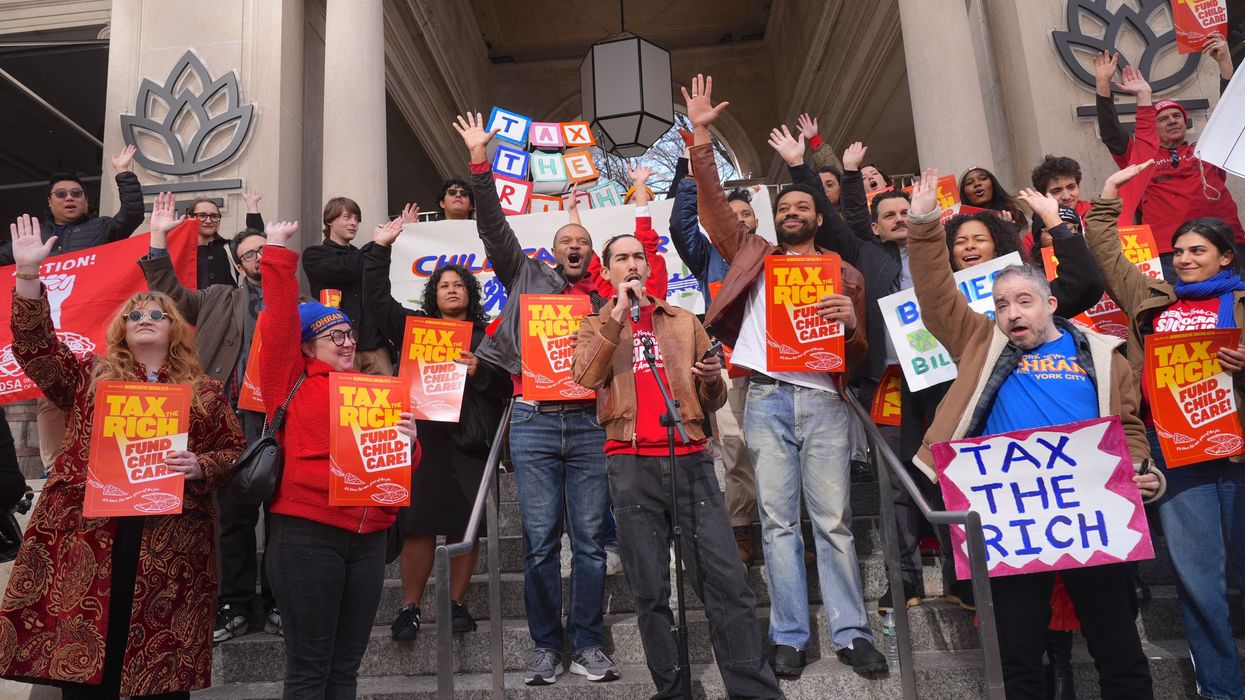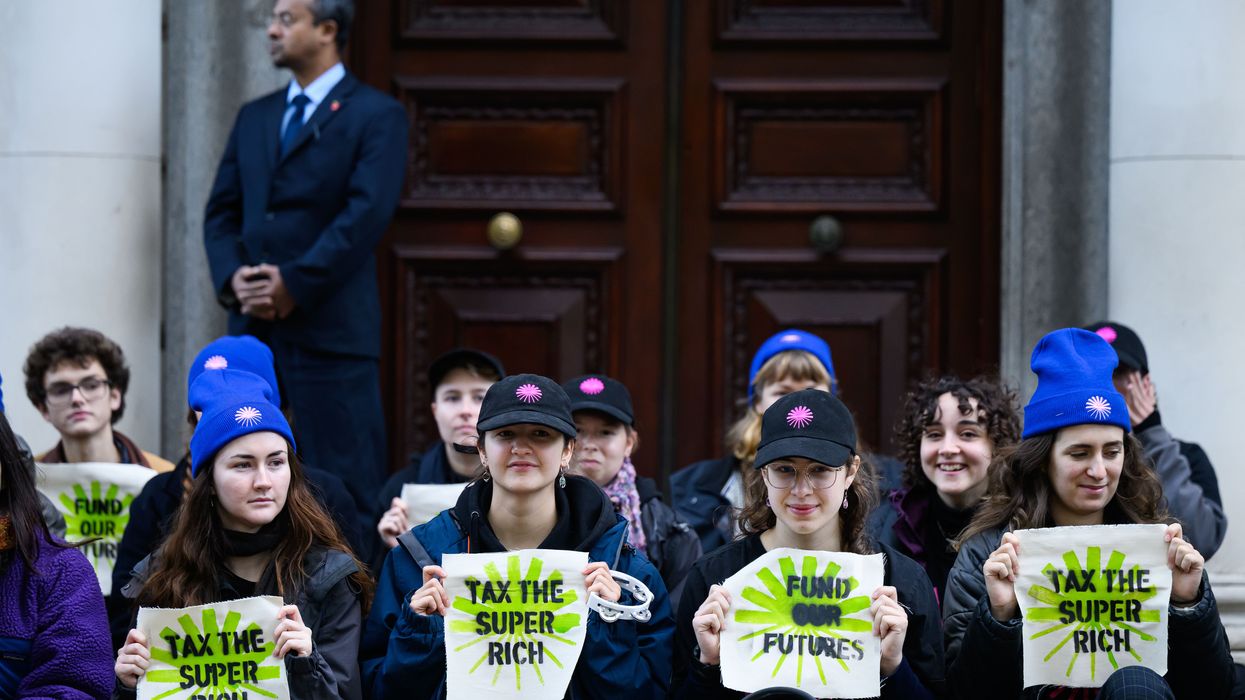Mamdani Backers Rally to 'Tax the Rich' as Transition Raises $1 Million in 10 Days From 12,000 Donors
"None of this would have been possible without everyday New Yorkers willing to spare $5, $10, or $20 to help build a government that will deliver for working people," said the mayor-elect.
Hundreds of people in New York City gathered on Sunday in Union Square with calls to "Tax the Rich" as they showed their support for the progressive agenda of mayor-elect Zohran Mamdani, the democratic socialist elected earlier this month who will take the helm of the nation's largest city on January 1.
The "Tax the Rich — Seize Our Future" event was co-sponsored by the New York City chapter of the Democratic Socialist of America, Housing Justice For All and NYS Tenant Bloc, Jewish Voice for Peace NYC, UAW Region 9A, the Invest in Our New Coalition, and others.
The groups are backing Mamdani's call for universal childcare, free public busses, a rent freeze, and city-operated grocery stores in the city, all which will be made more possible with revenue raised by increased taxes on the city's wealthiest individuals and for-profit companies.
"Zohran Mamdani’s cost-of-living agenda has the support of masses of working class New Yorkers—but winning an ambitious affordability agenda cannot be won with one mayor alone," said the NYC-DSA in a post about the "Tax the Rich" event on their website. "To build the universal public goods we deserve, we need to ensure the wealthiest individuals and corporations in our state are paying their fair share in taxes."
"It will take a movement to push Albany to put working New Yorkers before billionaire donors and tax the rich," said Danny Zaldes, a DSA member and organizer as he called on others to join the effort.
"As we know, power concedes nothing without a demand,” declared Democratic state Sen. Jabari Brisport (D-25) during his speech at the rally, “and today we demand to tax the rich!”
The rally served as the launch of a new campaign by coalition members behind the event, one aimed at making sure that Mamdani maintains grassroots support even as he takes charge of the city's municipal government in the New Year.
In order to fund his transition and maintain that popular support, Mamdani has asked supporters and donors to crowdfund for the transition and has created a nonprofit entity to mobilize on behalf of his progressive vision for the city going forward.
On Sunday, Mamdani's office said it has raised approximately $1 million in just 10 days, coming from over 12,00 individuals with an average gift of $77.
Contrasting the money raised with that of previous administrations, a statement from Mamdani's office said that "during Mayor Eric Adams' transition, he had just 884 individual donors, with an average donation of more than $1,000, and former Mayor Bill de Blasio had 820 individual donors, with an average donation of $2,392."
As it readies to take on the most powerful interests in the city as well as some of the wealthiest people on the planet who call New York City home, Mamdani said in a statement that the support of working people will be crucial to his administration's success.
"None of this would have been possible without everyday New Yorkers willing to spare $5, $10, or $20 to help build a government that will deliver for working people," said the mayor-elect. "I'm grateful for every dollar New Yorkers have contributed to make this vision of an affordable, more livable city a reality."
The campaign said the money will be used primarily for recruiting and retaining during the transition period as the administration takes shape.
"More than 12,000 New Yorkers are contributing to this transition to turn the page on the politics of the past and build a new era for New York City," said Elana Leopold, executive director of Mamdani's transition, in a statement. "Thanks to New Yorkers' supporter, we will be ready on day one with top talent in place and ready to deliver."


